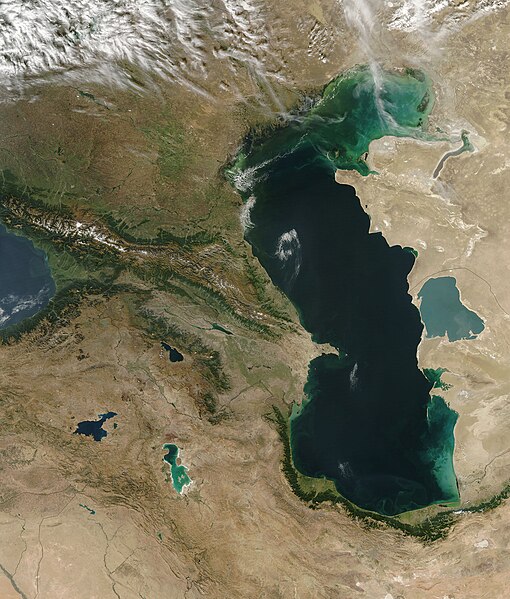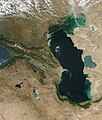Файл:Satellite image of the Caucasus-Caspian Region.jpg

Размер на този преглед: 510 × 599 пиксела. Други разделителни способности: 204 × 240 пиксела | 409 × 480 пиксела | 654 × 768 пиксела | 872 × 1024 пиксела | 1703 × 2000 пиксела.
Оригинален файл (1703 × 2000 пиксела, големина на файла: 1,29 МБ, MIME-тип: image/jpeg)
История на файла
Избирането на дата/час ще покаже как е изглеждал файлът към онзи момент.
| Дата/Час | Миникартинка | Размер | Потребител | Коментар | |
|---|---|---|---|---|---|
| текуща | 05:44, 26 октомври 2005 |  | 1703 × 2000 (1,29 МБ) | Brian0918 | Caspian Sea and Georgia Sometimes referred to as the Caucasus Isthmus, the Caucasus-Caspian Region is a mixing-pot for scores of cultures. Due in part to its geographic isolation and having been in the path of numerous Eurasian migrations over the cent |
Използване на файла
Следните 2 страници използват следния файл:
Глобално използване на файл
Този файл се използва от следните други уикита:
- Употреба в ar.wikipedia.org
- Употреба в ast.wikipedia.org
- Употреба в en.wikipedia.org
- Употреба в fr.wikipedia.org
- Употреба в fr.wiktionary.org
- Употреба в gcr.wikipedia.org
- Употреба в ky.wikipedia.org
- Употреба в mg.wikipedia.org
- Употреба в nn.wikipedia.org
- Употреба в no.wikipedia.org
- Употреба в oc.wikipedia.org
- Употреба в pt.wikibooks.org
- Употреба в sq.wikipedia.org



